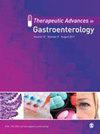Clarithromycin sustained-release tablet may be an improper therapy for the eradication of Helicobacter pylori.
IF 3.4
3区 医学
引用次数: 0
Abstract
Background Clarithromycin plays an important role in eradicating Helicobacter pylori (H. pylori) through quadruple therapy. However, there is limited research on whether different forms of clarithromycin dosage have similar efficacies against H. pylori. Objective We aimed to evaluate the efficacy of different forms of clarithromycin dosage in bismuth-containing quadruple therapy for eradicating H. pylori. Design A single-center retrospective analysis comparing the efficacy of different forms of clarithromycin dosage in eradicating H. pylori. Methods An analysis was conducted on patients diagnosed with H. pylori infection through the 13C-urea breath test (13C-UBT) at Henan Provincial People's Hospital, China from 2020 to 2022 who were treated with either a dispersible or sustained-release clarithromycin tablet (500 mg each), alongside amoxicillin (1000 mg), a standard dose of proton pump inhibitors (PPIs), and bismuth citrate (220 mg), administered twice daily as part of bismuth-containing quadruple therapy. Treatment efficacy was assessed using 13C-UBT at least 4 weeks after treatment completion. The H. pylori eradication rate was the primary outcome of this study, and factors influencing it were analyzed. Results Among 2094 screened patients, 307 with H. pylori infection (mean age, 41.8 ± 0.7 years; 43% men) received bismuth-containing quadruple therapy. Univariate analysis of the dispersible and sustained-release tablet groups revealed a lower eradication rate with the sustained-release tablet compared with the dispersible clarithromycin tablet regimen (75.26% (73/97) vs 95.26% (200/210), respectively; p < 0.05). Other factors, such as smoking, age, and PPI type, were not significantly associated with the cure rate. Multivariate analysis identified the form of clarithromycin dosage (dispersible vs sustained-release) to be an independent risk factor for eradication failure using the bismuth-containing quadruple therapy (odds ratio = 0.145, 95% confidence interval: (0.065-0.323); p < 0.05). Conclusion The clarithromycin dispersible tablet demonstrated a higher H. pylori eradication rate, and the sustained-release clarithromycin tablet may be inappropriate for H. pylori eradication.克拉霉素缓释片可能是根除幽门螺旋杆菌的不当疗法。
背景克拉霉素在通过四联疗法根除幽门螺旋杆菌(H. pylori)方面发挥着重要作用。目的我们旨在评估含铋四联疗法中不同剂型的克拉霉素对根除幽门螺杆菌的疗效。设计单中心回顾性分析比较不同剂型的克拉霉素对根除幽门螺杆菌的疗效。方法对2020年至2022年期间在河南省人民医院通过13C-尿素呼气试验(13C-UBT)确诊为幽门螺杆菌感染的患者进行分析,这些患者在接受含铋四联疗法的同时,还接受了克拉霉素分散片或缓释片(各500毫克)以及阿莫西林(1000毫克)、标准剂量的质子泵抑制剂(PPIs)和枸橼酸铋(220毫克)的治疗,每天给药两次。治疗完成至少 4 周后,使用 13C-UBT 评估疗效。结果在 2094 名接受筛查的患者中,307 名幽门螺杆菌感染者(平均年龄为 41.8 ± 0.7 岁;43% 为男性)接受了含铋四联疗法。对分散片组和缓释片组进行的单变量分析表明,与克拉霉素分散片方案相比,缓释片方案的根除率较低(分别为 75.26% (73/97) vs 95.26% (200/210);P < 0.05)。吸烟、年龄和 PPI 类型等其他因素与治愈率无明显关系。多变量分析发现,克拉霉素的剂型(分散型与缓释型)是使用含铋四联疗法根除失败的独立风险因素(几率比=0.145,95%置信区间:(0.065-0.323);P < 0.05)。
本文章由计算机程序翻译,如有差异,请以英文原文为准。
求助全文
约1分钟内获得全文
求助全文
来源期刊

Therapeutic Advances in Gastroenterology
Medicine-Gastroenterology
自引率
2.40%
发文量
103
期刊介绍:
Therapeutic Advances in Gastroenterology is an open access journal which delivers the highest quality peer-reviewed original research articles, reviews, and scholarly comment on pioneering efforts and innovative studies in the medical treatment of gastrointestinal and hepatic disorders. The journal has a strong clinical and pharmacological focus and is aimed at an international audience of clinicians and researchers in gastroenterology and related disciplines, providing an online forum for rapid dissemination of recent research and perspectives in this area.
The editors welcome original research articles across all areas of gastroenterology and hepatology.
The journal publishes original research articles and review articles primarily. Original research manuscripts may include laboratory, animal or human/clinical studies – all phases. Letters to the Editor and Case Reports will also be considered.
 求助内容:
求助内容: 应助结果提醒方式:
应助结果提醒方式:


